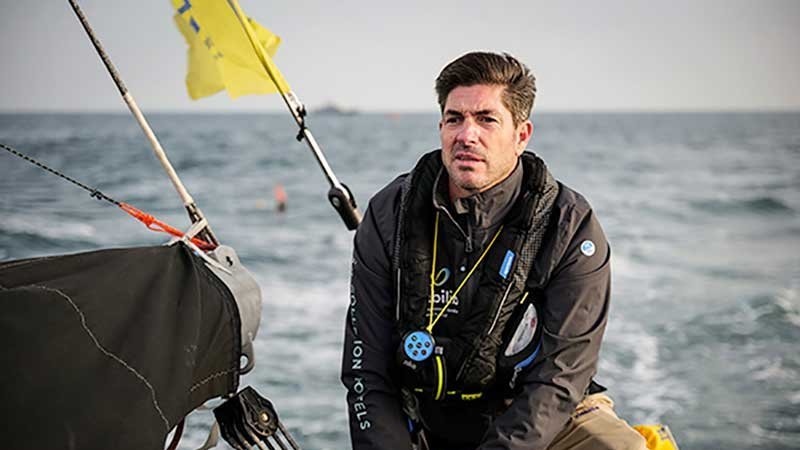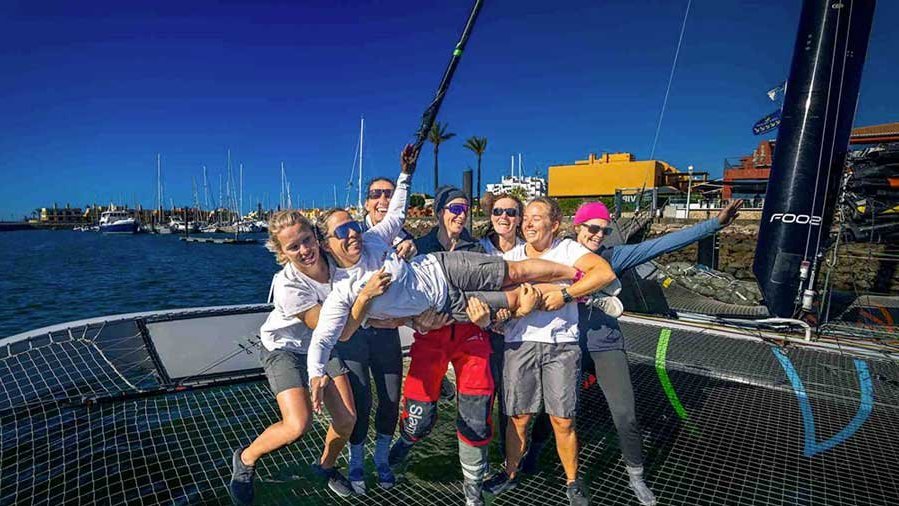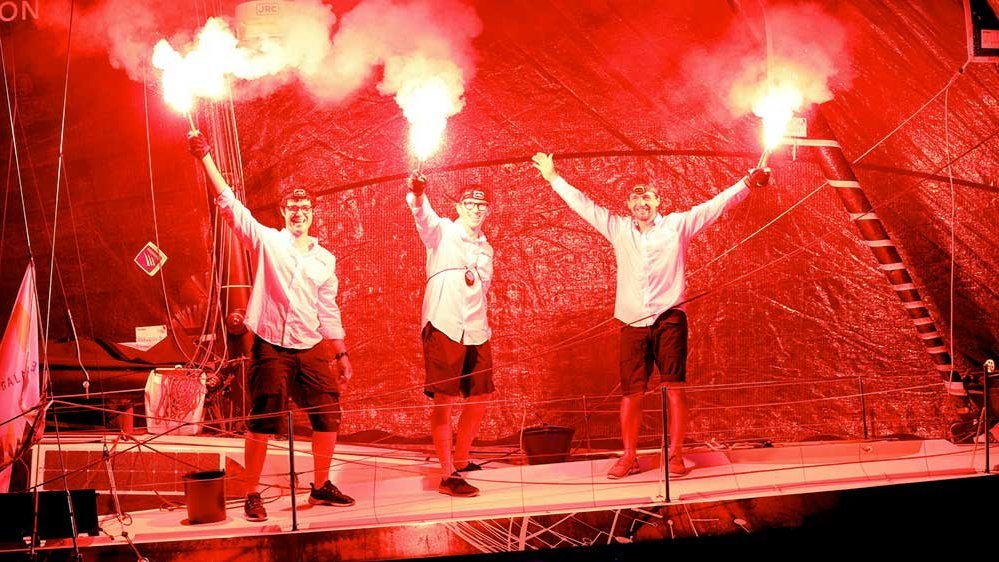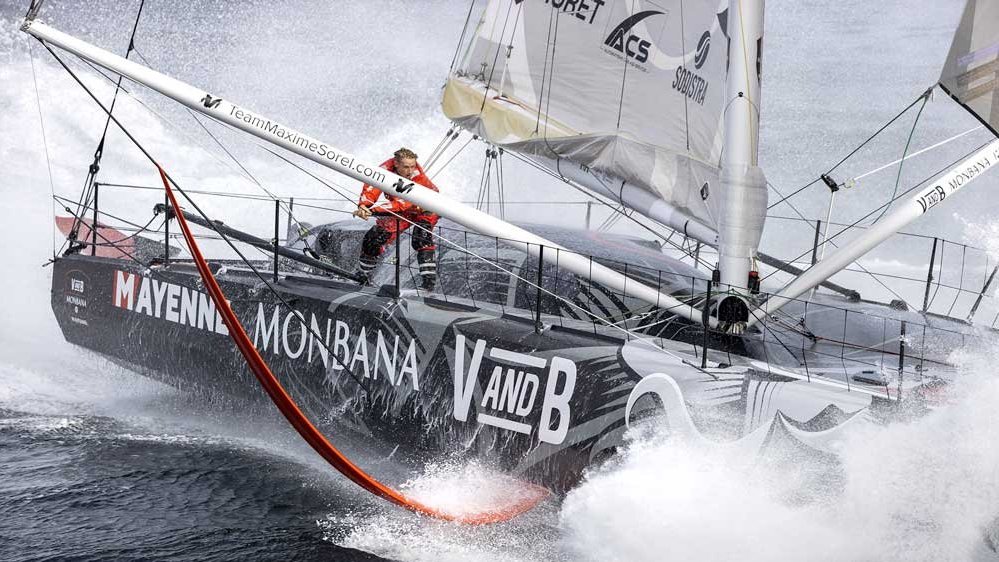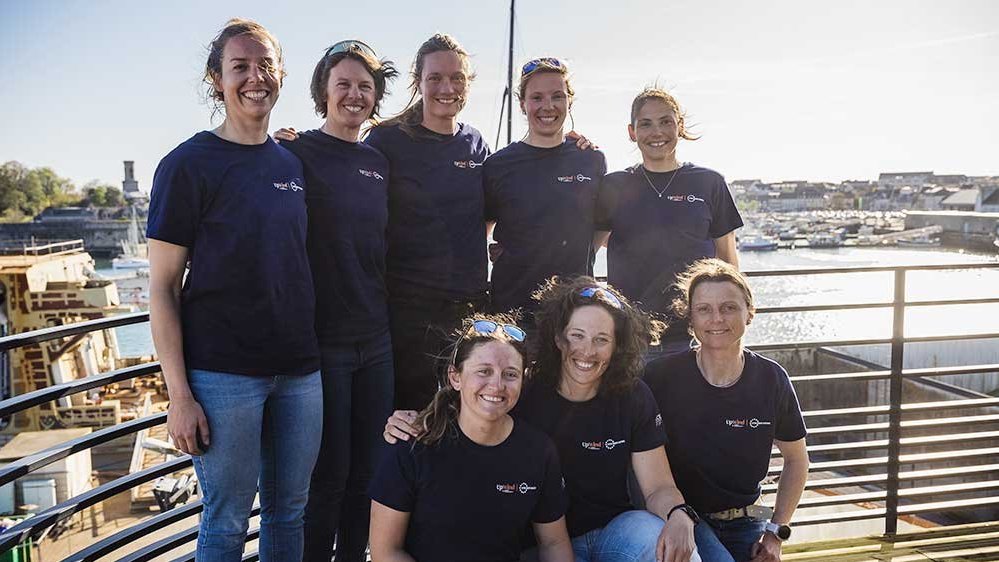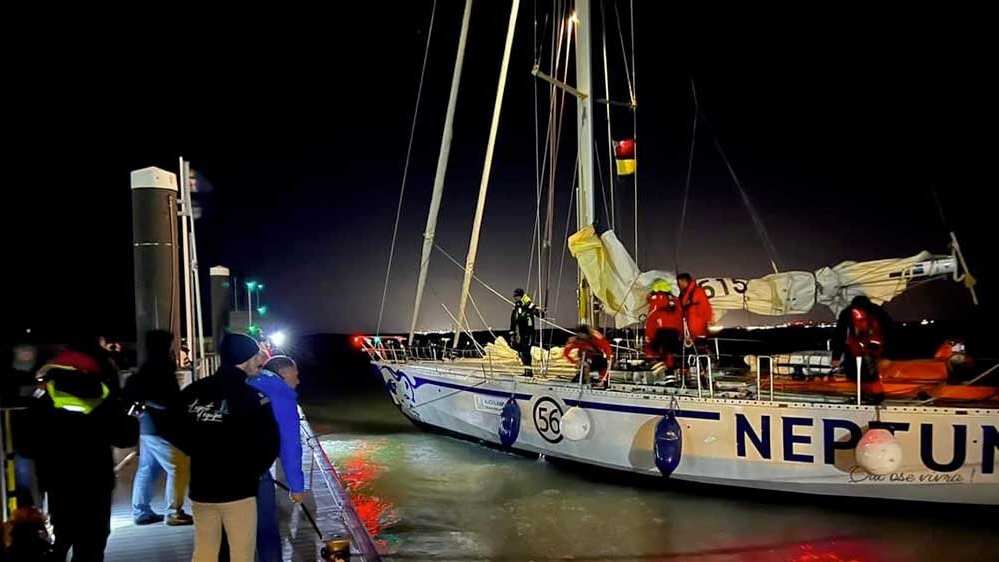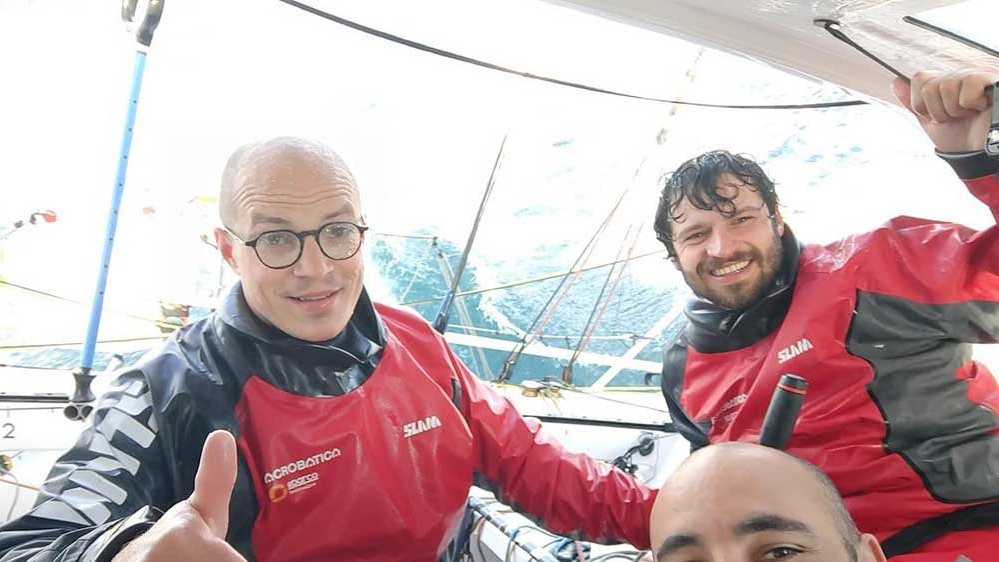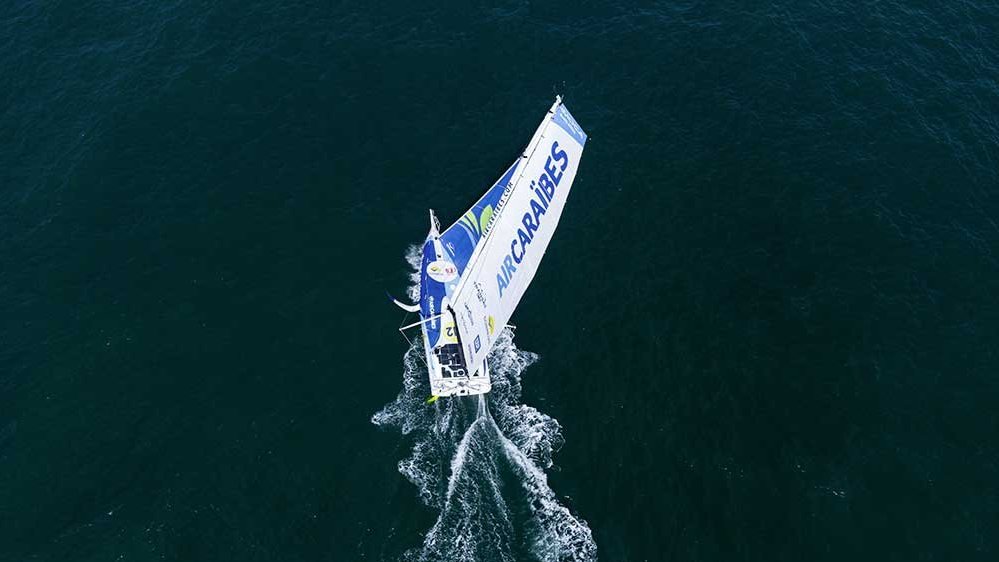Jules Verne Trophy
630, 640 miles on the log over the past 24 hours !
mardi 9 avril 2002 –
"We’ve been saying it ever since we arrived in the Southern Ocean ; as soon as all the conditions were right, angle and force of wind and sea state, then Orange would accelerate, without excess and without breaching our watchword : spare the men and the gear". Bruno Peyron at the height of a day marked by very high speeds refuses to let it go to his head. "The Indian wasn’t favourable to us, with having to beat against strong winds, and the Pacific seems to be opening up for us under better auspices" explained the skipper. "The high has smoothed the sea, and the swell is favourable. It’s now that we must unleash the horses, because we can combine being cautious with the gear and high speeds." "The boat is very fast" added Gilles Chiorri, "in untidy seas, she slams very hard and the gear suffers. So you have to rein her in to avoid smashing everything." On port tack in the corridor of wind, Orange is striding along like a wing three-quarter. Ahead of her bows, the tropical low is waving its threats of head winds and a powerful swell. At 26 knots average, Peyron and his boys can avoid it by sliding just underneath it, without getting too close to the land of ice. It’s a perilous exercise, but the boat is designed for this, and the crew, in the best of form, both physically and morally, is now perfectly acclimatised to the South. "It’s cold, ski goggles, neoprene suits, gloves developed for offshore oil platform workers in the North Sea are the order of the day" described Bruno. "But we’ve adapted ourselves to this world. We don’t feel so foreign now."
Quote / unquote...
Gilles Chiorri : "We’re going fast, slotted onto the great circle route. The weather is complex, but we have a few alternatives. No compromises today. The sea is smooth, the wind angle ideal, it’s now up to the helmsmen and trimmers to pile on the speed. It’s pitch-black night. We’re steering by the compass and the wind angle. We’re clipped on with our harnesses and are concentrating on the trim, while observing the sea temperature and watching the horizon."
Sébastien Josse : "We’re living an exceptional adventure. It’s really enriching for me, after my Figaro races. Managing the boat and oneself is interesting to observe. You have to know how to go fast, reasonably and for the long term. I’m missing the "Solitaire". When changing watches we get in each other’s way a bit. But the atmosphere is great. We communicate a lot between "Figarists"."
Jean-Baptiste Epron : "Our big truck is really hauling. You have to anticipate a lot to avoid getting overpowered by the machine. This circumnavigation is an astonishing experience, both from a collective point of view and a personal point of view. The South has been very clement with us ? but with this boat we try to avoid getting dominated by it all. We’re suffering less and because of that, no great storms to bring home as souvenirs..."
Denis van den Brink - Mer & Média / Translation David Palmer - SeaSpeak / Orange
Voir la carte du tour du monde : Orange autour du monde
Dans la même rubrique
Jules Verne Trophy : 24.69 knots average for an hour at the 1200 position report...
Jules Verne Trophy : Orange is once again heading back down towards the deep south
Jules Verne Trophy : Orange is slaloming between two lows
Jules Verne Trophy : Passage of the International Date Line, passage of the Pacific, passage of the front...
 Sea, Sail & Surf news
Sea, Sail & Surf news